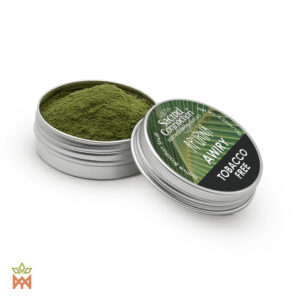Showing the single result
- € 20,00 Incl. VATSelect options This product has multiple variants. The options may be chosen on the product page
Showing the single result
Exploring Apurinã Rapé: A Comprehensive Overview
This tobacco-free snuff powder holds profound significance within their community, serving as a conduit for spiritual connection, healing, and protection against negative energies. Derived from dried awiry leaves, Apurinã rapé is meticulously crafted using time-honored methods passed down through generations, reflecting the intimate relationship between the Apurinã people and their natural surroundings.
Origins and Production Process
The journey of Apurinã rapé begins with the careful selection and harvesting of awiry leaves, a process steeped in reverence for the land and its offerings. Unlike conventional rapé production methods, which often involve fermentation or heating, the awiry tobacco utilized by the Apurinã is air-dried, preserving its vibrant green color and inherent potency. This distinctive approach to preparation extends to the grinding process, where the dried leaves are meticulously ground without the addition of ashes, resulting in a raw and potent form of rapé that encapsulates the essence of the Amazon rainforest.
Spiritual and Medicinal Significance
Within the Apurinã community, the usage of rapé transcends the realm of mere substance, embodying profound spiritual and medicinal significance. It is believed that the administration of rapé facilitates communication with the spirit world, allowing individuals to seek guidance, protection, and healing. Moreover, rapé is revered for its ability to promote physical and emotional well-being, offering relief from ailments and restoring balance to the body and mind. Such beliefs are deeply rooted in the cultural and spiritual heritage of the Apurinã people, serving as a testament to their interconnectedness with the natural world.
Administration Techniques
Distinctive from common indigenous practices, Apurinã rapé is administered through a tube, deviating from the traditional use of Kuripe or Tepi. This unique method underscores the cultural preferences and rituals of the Apurinã people, reflecting their nuanced understanding of rapé’s potency and efficacy. By inhaling rapé through a tube, individuals engage in a sacred act of communion with the plant spirit, honoring the ancient traditions and wisdom of their ancestors.
Popularity and Cautionary Considerations
In recent years, the usage of Apurinã rapé has transcended indigenous boundaries, gaining popularity among non-indigenous populations for its purported healing and spiritual properties. However, it is essential to approach its usage with caution and respect, recognizing the potent effects it may have on both the body and mind. As with any sacred substance, responsible consumption and guidance from experienced practitioners are advised to ensure a safe and meaningful experience.
Exploring Sacred Snuff Blends
Beyond the realm of Apurinã rapé, a rich tapestry of sacred snuff blends awaits exploration within the Amazon Basin. Each mixture boasts a unique blend of plant materials, ashes, and natural substances, reflecting the diverse cultural heritage and traditions of indigenous communities across the region. From the syncretic blends of the Caboclo to the high-quality Rapé Snuaaffs of the Nukini and the ancient wisdom of the Kuntanawa, these sacred snuffs offer profound insights into the interconnectedness of humanity, spirituality, and the natural world.
Conclusion
The study of Apurinã rapé serves as a gateway to understanding the intricate relationship between indigenous cultures, botanical knowledge, and spiritual practices within the Amazon rainforest. By delving into its origins, production methods, spiritual significance, and cautionary considerations, individuals can gain a deeper appreciation for this sacred substance and its role in preserving indigenous traditions and wisdom for generations to come.


